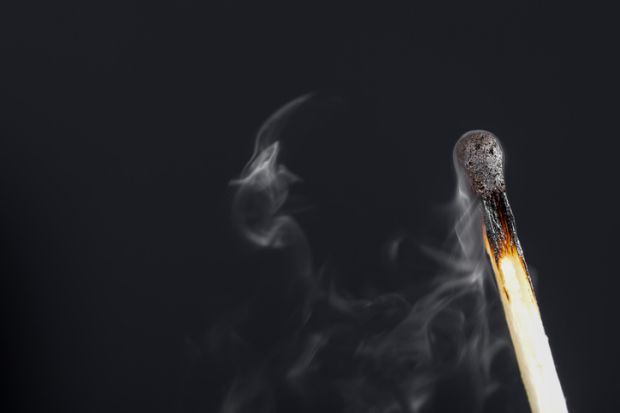Australia appears set to disband its renowned research centre on bushfires and natural hazards a year after the nation experienced the most extreme bushfire season on record.
A senate estimates committee has heard that funding for the Bushfire and Natural Hazard Cooperative Research Centre (CRC) will cease at the end of June 2021.
The centre brings together researchers from 17 Australian universities as well as emergency services agencies, federal and state departments and the governments of New Zealand, Portugal and the US. Its bushfire warning systems and modelling software have been credited with saving lives, and its researchers were embedded with firefighting services during the summer crisis.
Its funding will be terminated in line with guideline changes to the CRC programme in the wake of a 2015 review, which recommended that the centres should be limited to maximum 10-year terms with no extensions.
The review, by businessman David Miles, called for the abolition of a “priority public good funding mechanism” which had been introduced in 2013 to allow financial support for certain CRCs to be extended.
“CRC programme funding inherently delivers public good by enabling industry-focused research on key issues,” the review found. “There is no need for a separate mechanism.”
At the time, the Bushfire and Natural Hazards CRC was highlighted as a centre that would face closure after the government accepted the recommendations. Commentators said that while it provided “highly sought-after information on each fire season”, the centre did not provide commercial goods or services and industry would not fund it.
Labor senator Kim Carr said those warnings were proving accurate. “The strongest collaboration of bushfire and natural hazard researchers we’ve got in the country is not able to be sustained,” he said.
“The recent fire season has highlighted once again just how important the capacity to get these experts together is for the country. It highlights the damage of having a policy that says we’re not going to fund public benefit research, and we’re not going to allow rebids on these CRCs, no matter how good they are.”
Bureaucrats fronting the committee hearing on 4 March lauded the CRC’s “highly effective” record. Jane Urquhart, head of the Science and Commercialisation Policy Division of the Industry Department, said its fire mapping tools had been credited with saving lives in Queensland in late 2018.
More recently, fire services in New South Wales, Queensland and South Australia had received “bespoke expertise” from CRC researchers embedded with their teams. The centre was undertaking “world first” research to protect emergency services workers and had produced one of the main pieces of fire modelling and prediction software used in Australia.
The division’s general manager, David Wilson, said the department had been discussing a “transition plan” with the centre. He said other CRCs had “successfully transitioned” after their funding expired.
Mr Carr said that was “horse shit”, because all of the participants in the Bushfire and Natural Hazards CRC were public agencies. “They don’t have money to spin off a private company, which is what they usually mean by that sort of language.”
Register to continue
Why register?
- Registration is free and only takes a moment
- Once registered, you can read 3 articles a month
- Sign up for our newsletter
Subscribe
Or subscribe for unlimited access to:
- Unlimited access to news, views, insights & reviews
- Digital editions
- Digital access to THE’s university and college rankings analysis
Already registered or a current subscriber? Login








